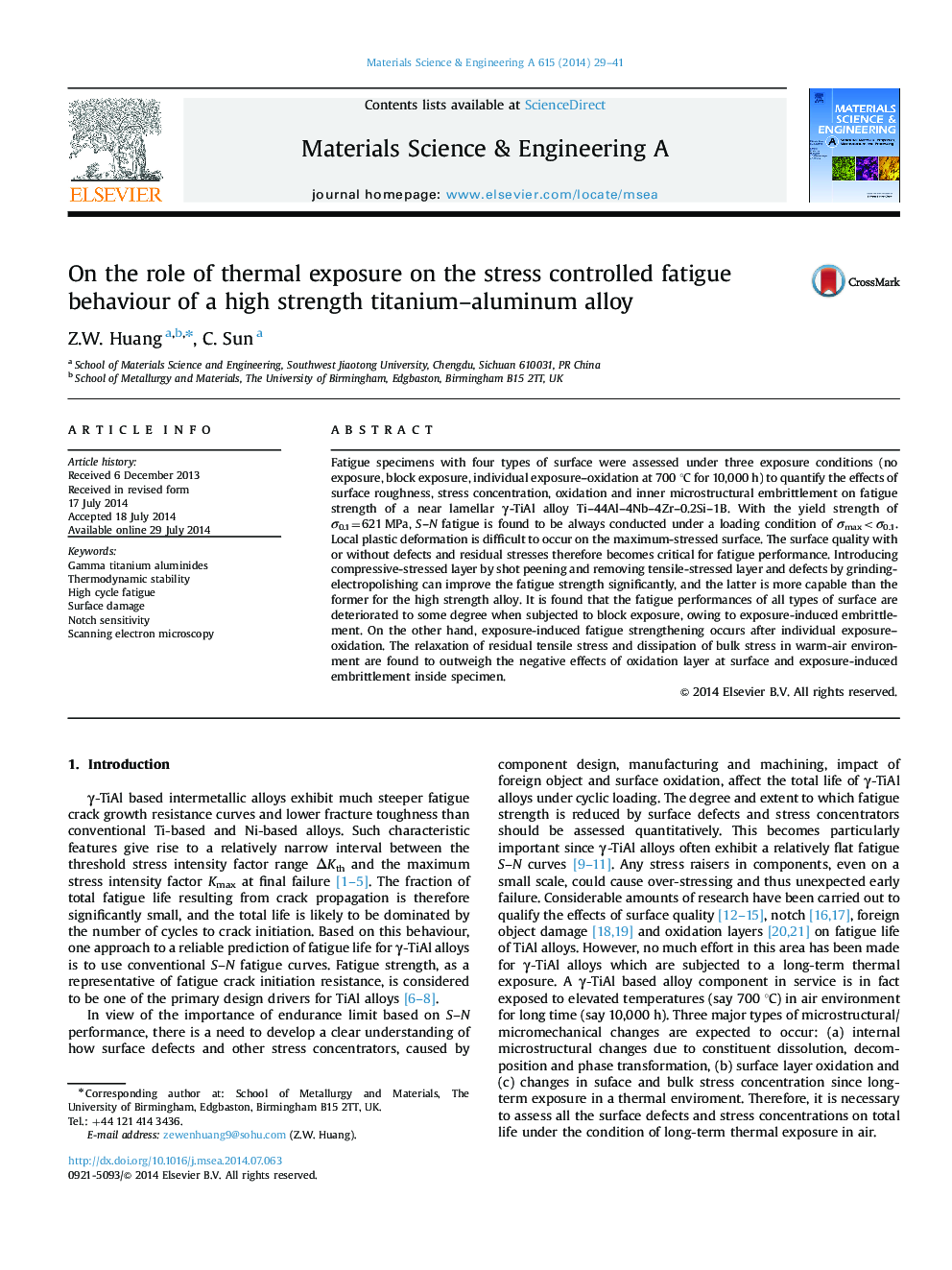| Article ID | Journal | Published Year | Pages | File Type |
|---|---|---|---|---|
| 7979916 | Materials Science and Engineering: A | 2014 | 13 Pages |
Abstract
Fatigue specimens with four types of surface were assessed under three exposure conditions (no exposure, block exposure, individual exposure-oxidation at 700 °C for 10,000 h) to quantify the effects of surface roughness, stress concentration, oxidation and inner microstructural embrittlement on fatigue strength of a near lamellar γ-TiAl alloy Ti-44Al-4Nb-4Zr-0.2Si-1B. With the yield strength of Ï0.1=621 MPa, S-N fatigue is found to be always conducted under a loading condition of Ïmax<Ï0.1. Local plastic deformation is difficult to occur on the maximum-stressed surface. The surface quality with or without defects and residual stresses therefore becomes critical for fatigue performance. Introducing compressive-stressed layer by shot peening and removing tensile-stressed layer and defects by grinding-electropolishing can improve the fatigue strength significantly, and the latter is more capable than the former for the high strength alloy. It is found that the fatigue performances of all types of surface are deteriorated to some degree when subjected to block exposure, owing to exposure-induced embrittlement. On the other hand, exposure-induced fatigue strengthening occurs after individual exposure-oxidation. The relaxation of residual tensile stress and dissipation of bulk stress in warm-air environment are found to outweigh the negative effects of oxidation layer at surface and exposure-induced embrittlement inside specimen.
Keywords
Related Topics
Physical Sciences and Engineering
Materials Science
Materials Science (General)
Authors
Z.W. Huang, C. Sun,
